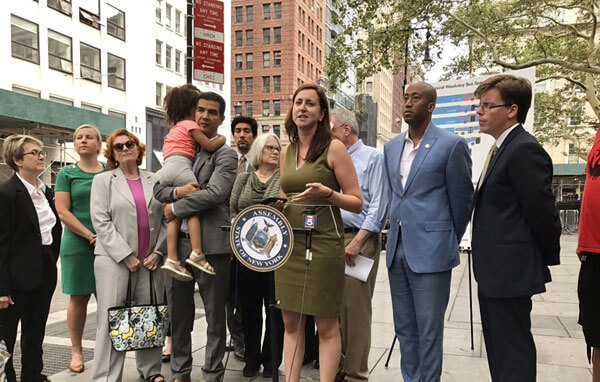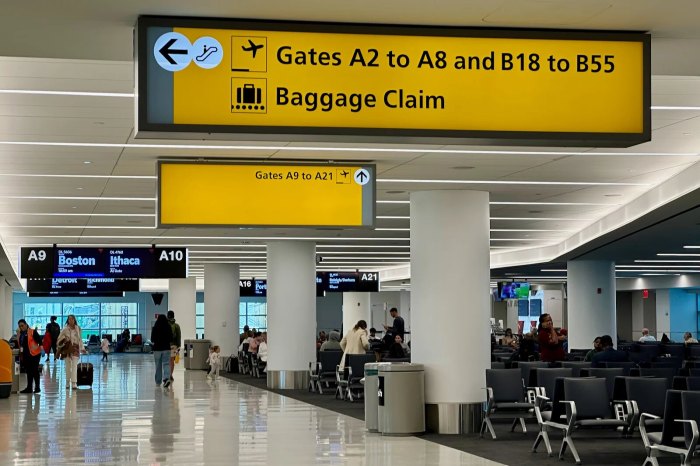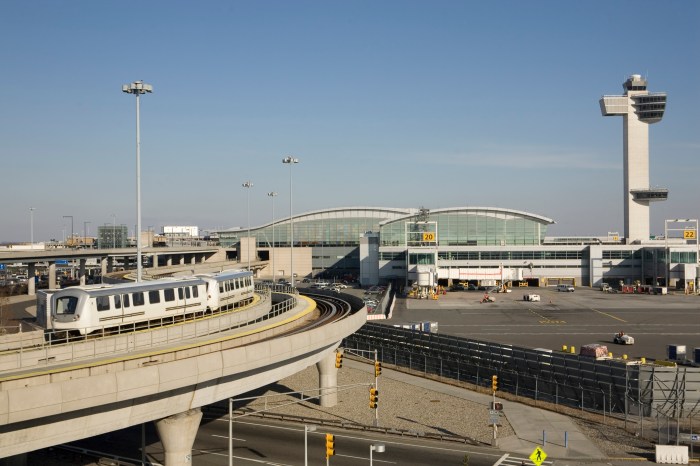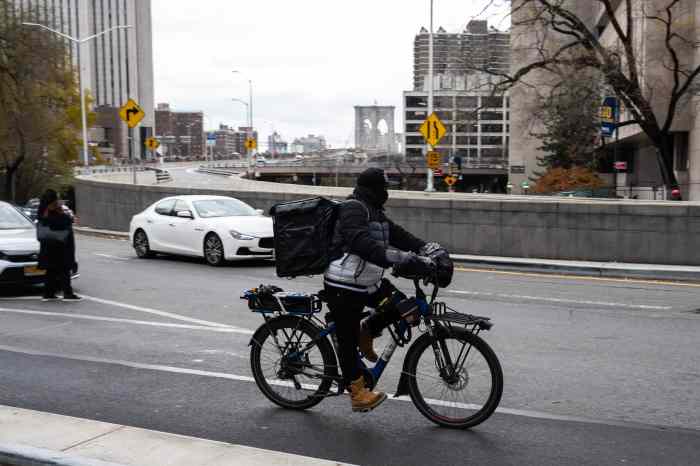By Mark Hallum
With so much attention from the state concerning the city’s subways, a number of state Assembly members formed a coalition to call on MTA Chairman Joe Lhota to shift focus to improve bus service for residents in transit deserts such as northeast Queens.
Assemblywoman Nily Rozic (D-Fresh Meadows) delivered remarks at a Monday press conference in Manhattan, backing a letter asking Lhota to include bus improvements in his plans to address the subway crisis. Written by Assemblyman Jeffrey Dinowitz (D-Bronx) and signed by 45 members of the Legislature, the letter asks for the acceleration of improvements to bus routes, equipment and technology.
“As a representative of a district in Queens that does not have a single subway or train station, I know how challenging it can be to get around the borough and connect to other parts of the city when bus service is infrequent and unreliable,” she said. “Any proposal intended to improve the status of our transit system should not neglect the value of quality bus service and the difference it makes in neighborhoods that lack access to an expansive network of transit options.”
The letter called for the implementation of transit signal priority to increase the overall speed at which buses can travel, while decreasing the amount of time buses idle at stops with all-door boarding technology to allow commuters to swipe MetroCards on the curb and board from multiple entrances as well as a re-examination of bus routes, special lanes and bus islands.
Dinowitz pointed out that 2.5 million New Yorkers use buses every day, particularly riders with accessbility needs and those who live in the outer boroughs far from public transit.
“I want to make sure that the concerns of all New Yorkers are heard, even if they don’t get the same amount of media attention,” he said. “Transit signal priority and all-door boarding are no brainer changes that could reduce bus travel times by 25 percent for minimal investment. Let’s not delay any more and bring our bus system into the 21st century.”
The city Department of Transportation said it would expand the use of transit signal priority, but not until 2020, a press release from Dinowitz’ office said.
“The Summer of Hell has made the dire state of the subway obvious, but that’s just one part of the public transit meltdown riders face. Buses have been in a state of slow-motion crisis for years,” said Nick Sifuentes, deputy director of the Riders Alliance. “Fortunately, we know our state and city elected officials can fix bus service for millions of daily riders —and do it quickly and for a fraction of the cost to repair our subway system.”
The city’s Select Bus Service has seen an increase in ridership of 30 percent after implementing all-door boarding technology, which reduced travel time by up to 15 percent, the release said.
“Amidst New York City’s current transit crisis, the need for better bus service cannot be ignored,” said Jaqi Cohen, campaign coordinator for the Straphangers Campaign. “Slow buses, circuitous routes, and unreliable service have caused bus riders years of misery. The time is now for the MTA to expedite a plan to turn around bus service for the millions of riders who depend on it.”
After riders experienced systemwide infrastructure meltdowns, Gov. Andrew Cuomo declared a state of emergency in late June for the city’s subways to expedite upgrades to signals and trains while pouring an extra $1 billion into the MTA’s capital funds.
This coincided with what Cuomo dubbed the “summer of hell,” a period of eight weeks in which Penn Station would undergo major upgrades to infrastructure and service in the nation’s largest transit hub would be reduced by 20 percent.
Amtrak, which owns Penn Station, admitted that its agency had known about the decline of infrastructure for years and the displacement of people from reduced service on the LIRR was expected to impact the subways.
But the LIRR reported a relatively minor dip in ridership in the first two weeks of the “Summer of Hell,” according to transit officials at a July 26 MTA board meeting. LIRR President Patrick Nowakowski presented figures, which showed a drop of about 11,000 riders through Penn Station, compared to the baseline of 86,000 during the morning peak hour on Week Two. Evening peak hour through the transit hub only saw a decline of about 4,000 commuters.
Lhota unveiled in July his short-term plan to repair the city’s failing subway system and restore riders’ confidence in public transit, a proposal which includes transforming how the transit system operates in the immediate future. It will target problem infrastructure and garbage, and increase staff and customer communication.
Reach reporter Mark Hallum by e-mail at mhall




































